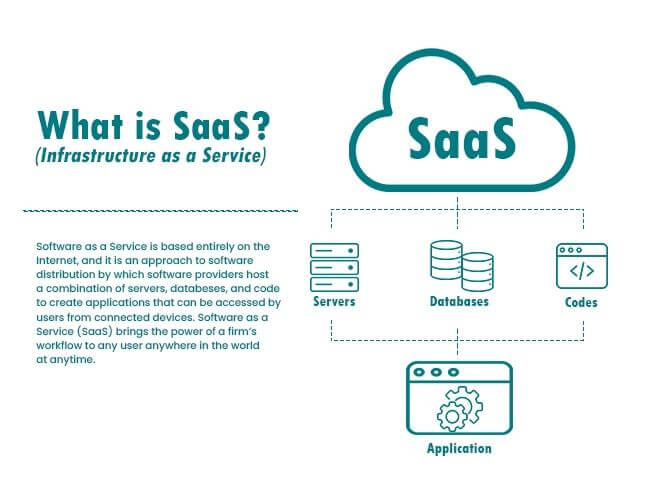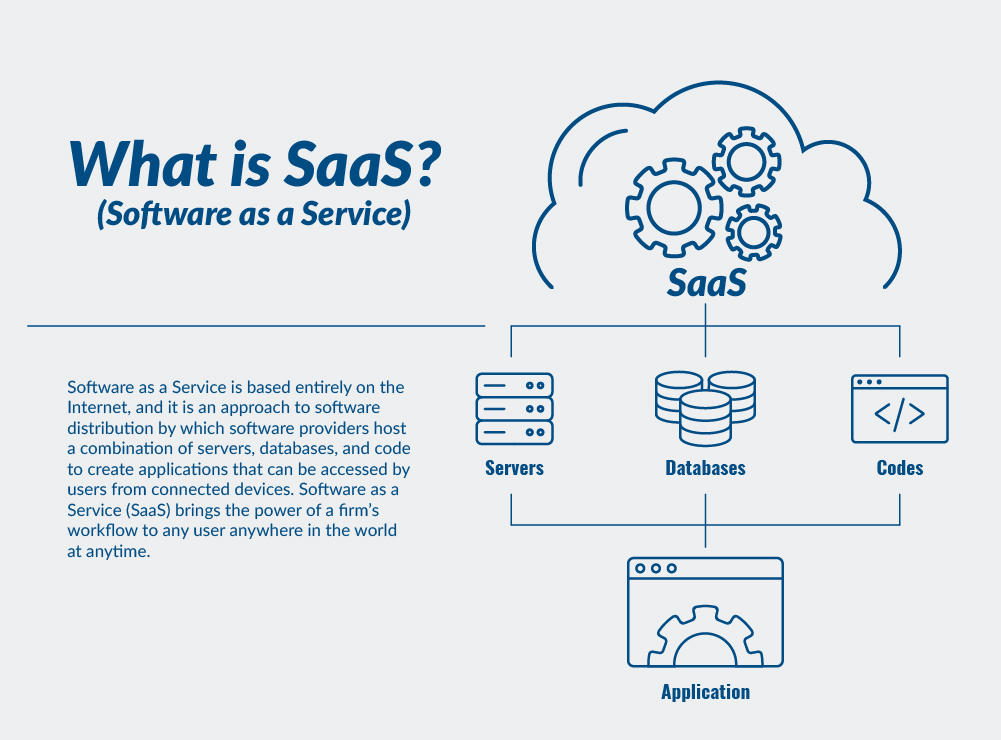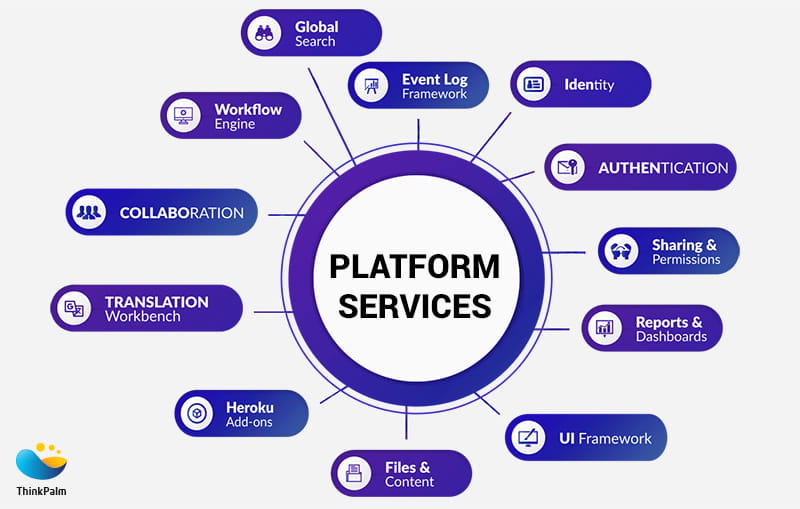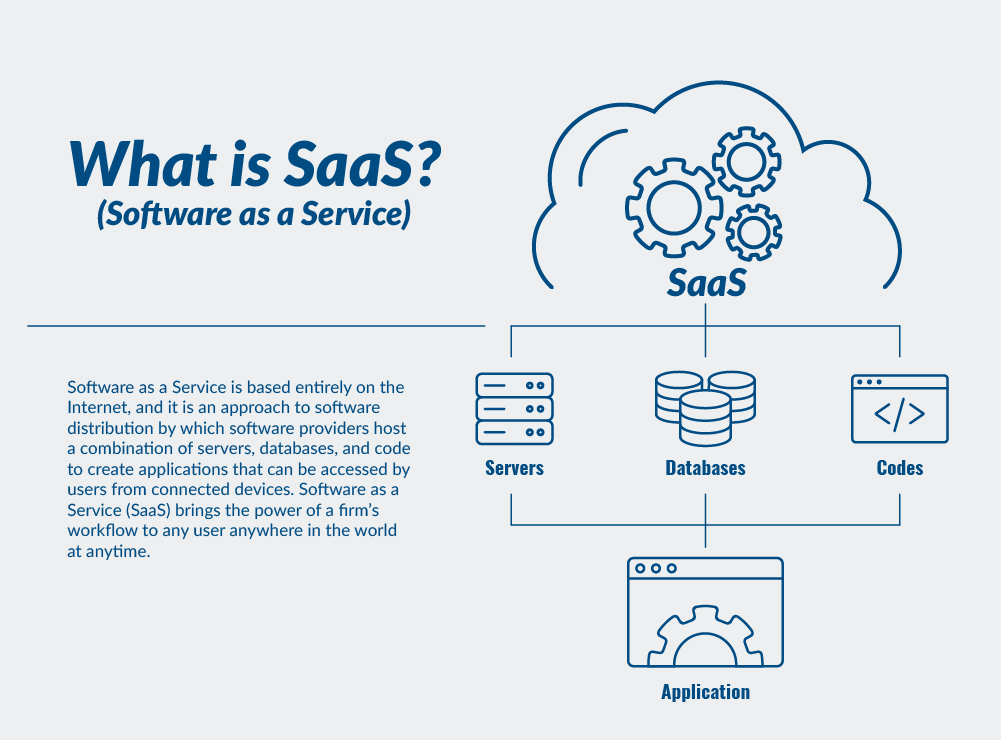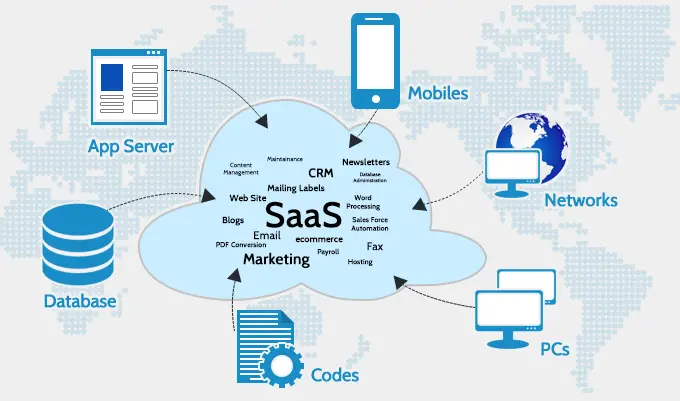What is SaaS and How is it Revolutionizing the PCB Industry
The Printed Circuit Board (PCB) design industry has undergone significant transformations in recent years, driven in part by the growing adoption of Software as a Service (SaaS) solutions. SaaS, a software delivery model in which applications are hosted and managed by a third-party provider, has revolutionized the way designers and engineers work. By providing on-demand access to a range of tools and applications, SaaS has increased collaboration, scalability, and reduced costs for PCB design teams.
One of the primary benefits of SaaS is its ability to provide flexible and scalable solutions for PCB design. With SaaS, designers and engineers can access a range of tools and applications from anywhere, at any time, using a variety of devices. This has enabled greater collaboration and communication among team members, regardless of their location. Additionally, SaaS solutions can be easily scaled up or down to meet the changing needs of a project, reducing the need for costly hardware upgrades or software licenses.
The use of SaaS in PCB design has also led to increased efficiency and productivity. By automating many routine tasks and providing real-time feedback, SaaS solutions have enabled designers and engineers to focus on higher-level tasks, such as design optimization and simulation. This has resulted in faster design cycles, reduced errors, and improved overall quality.
Furthermore, SaaS has enabled the development of more complex and sophisticated PCB designs. By providing access to advanced simulation and analysis tools, SaaS solutions have enabled designers and engineers to create more intricate and detailed designs, with improved performance and reliability.
As the PCB design industry continues to evolve, it is likely that SaaS will play an increasingly important role. With its ability to provide flexible, scalable, and efficient solutions, SaaS is well-positioned to meet the changing needs of designers and engineers. As such, it is essential for companies to understand the benefits and applications of SaaS in PCB design, and to develop strategies for leveraging these solutions to drive innovation and growth.
How to Choose the Right SaaS Business Model for Your PCB Needs
When it comes to selecting a Software as a Service (SaaS) business model for Printed Circuit Board (PCB) design, there are several options to consider. The right model can help optimize costs, improve productivity, and enhance collaboration. In this section, we will discuss the different types of SaaS business models available for PCB design, including subscription-based, pay-per-use, and freemium models.
Subscription-based models are one of the most common SaaS business models for PCB design. This model involves paying a recurring fee, usually monthly or annually, to access a range of tools and applications. The benefits of subscription-based models include predictable costs, access to regular updates and new features, and scalability. However, this model may not be suitable for companies with limited budgets or those that only require occasional access to PCB design tools.
Pay-per-use models, on the other hand, involve paying only for the specific tools and applications used. This model can be beneficial for companies with limited budgets or those that only require occasional access to PCB design tools. However, pay-per-use models can be more expensive in the long run, especially for companies with high usage requirements.
Freemium models offer a combination of free and paid services. This model provides basic tools and applications for free, while charging for premium features and support. Freemium models can be beneficial for companies that want to try out PCB design tools before committing to a paid subscription. However, this model may not provide access to all the features and support required for complex PCB design projects.
When evaluating SaaS business models for PCB design, it is essential to consider several factors, including costs, scalability, and support. Companies should also consider their specific needs and requirements, including the type of PCB design projects they will be working on, the number of users, and the level of support required.
Some popular SaaS business models for PCB design include Autodesk Eagle, Altium Designer, and Cadence Allegro. These models offer a range of tools and applications, including subscription-based, pay-per-use, and freemium options. When selecting a SaaS business model, companies should consider the specific features and support required for their PCB design projects, as well as the costs and scalability of the model.
The Advantages of Cloud-Based PCB Design and Simulation Tools
Cloud-based PCB design and simulation tools have revolutionized the way designers and engineers work. By providing on-demand access to a range of tools and applications, cloud-based solutions have increased collaboration, scalability, and reduced costs for PCB design teams. In this section, we will highlight the advantages of using cloud-based PCB design and simulation tools, and provide examples of popular tools.
One of the primary advantages of cloud-based PCB design and simulation tools is increased collaboration. With cloud-based solutions, designers and engineers can work together in real-time, regardless of their location. This has enabled greater collaboration and communication among team members, resulting in faster design cycles and improved overall quality.
Another advantage of cloud-based PCB design and simulation tools is scalability. Cloud-based solutions can be easily scaled up or down to meet the changing needs of a project, reducing the need for costly hardware upgrades or software licenses. This has enabled companies to quickly adapt to changing project requirements, and to reduce costs associated with hardware and software maintenance.
Cloud-based PCB design and simulation tools have also reduced costs for companies. By providing on-demand access to a range of tools and applications, cloud-based solutions have eliminated the need for costly software licenses and hardware upgrades. This has enabled companies to reduce costs associated with PCB design, and to allocate resources more effectively.
Some popular cloud-based PCB design and simulation tools include Autodesk Eagle and Altium Designer. Autodesk Eagle is a cloud-based PCB design tool that provides a range of features and applications, including schematic capture, PCB layout, and simulation. Altium Designer is a cloud-based PCB design and simulation tool that provides a range of features and applications, including PCB design, simulation, and manufacturing.
Other advantages of cloud-based PCB design and simulation tools include improved data management and security. Cloud-based solutions provide secure data storage and transmission, reducing the risk of data loss or theft. This has enabled companies to protect their intellectual property, and to ensure compliance with regulatory requirements.
In addition to the advantages mentioned above, cloud-based PCB design and simulation tools have also enabled the development of more complex and sophisticated PCB designs. By providing access to advanced simulation and analysis tools, cloud-based solutions have enabled designers and engineers to create more intricate and detailed designs, with improved performance and reliability.
Overcoming Security Concerns with SaaS-Based PCB Design
As with any cloud-based solution, security concerns are a top priority when it comes to SaaS-based PCB design. Companies must ensure that their sensitive design data is protected from unauthorized access, theft, and loss. In this section, we will address common security concerns associated with SaaS-based PCB design and discuss measures that can be taken to ensure secure data storage and transmission.
One of the primary security concerns associated with SaaS-based PCB design is data protection. Companies must ensure that their design data is encrypted and stored securely in the cloud. This can be achieved through the use of secure protocols such as SSL/TLS and encryption algorithms such as AES. Additionally, companies should ensure that their SaaS provider has a robust security policy in place, including regular security audits and penetration testing.
Another security concern associated with SaaS-based PCB design is intellectual property theft. Companies must ensure that their sensitive design data is protected from unauthorized access and theft. This can be achieved through the use of access controls, such as user authentication and authorization, and data encryption. Additionally, companies should ensure that their SaaS provider has a robust intellectual property protection policy in place, including non-disclosure agreements and confidentiality agreements.
To ensure secure data storage and transmission, companies should look for SaaS providers that have achieved industry-recognized security certifications, such as SOC 2 and ISO 27001. These certifications demonstrate that the SaaS provider has implemented robust security controls and procedures to protect sensitive data.
Companies should also ensure that their SaaS provider has a robust incident response plan in place, including procedures for responding to security incidents and notifying affected parties. This will help to minimize the impact of a security incident and ensure that sensitive data is protected.
In addition to the measures mentioned above, companies can also take steps to ensure the security of their SaaS-based PCB design solution. This includes implementing robust access controls, such as multi-factor authentication, and ensuring that all users are aware of the importance of security and the procedures for reporting security incidents.
By taking these measures, companies can ensure that their SaaS-based PCB design solution is secure and that their sensitive design data is protected. This will help to minimize the risk of security incidents and ensure that companies can focus on designing and manufacturing high-quality PCBs.
Real-World Examples of Successful SaaS-Based PCB Design Implementations
Several companies have successfully implemented SaaS-based PCB design solutions, achieving significant benefits and results. In this section, we will showcase real-world examples of companies that have adopted SaaS-based PCB design solutions, highlighting the benefits and results achieved.
One example is a leading electronics manufacturing company that adopted a SaaS-based PCB design solution to improve collaboration and reduce costs. The company was able to reduce its design cycle time by 30% and decrease its costs by 25% by using the SaaS-based solution. Additionally, the company was able to improve its design quality and reduce errors by using the solution’s built-in simulation and analysis tools.
Another example is a startup company that used a SaaS-based PCB design solution to develop a new product. The company was able to quickly design and prototype its product using the SaaS-based solution, reducing its time-to-market by 50%. Additionally, the company was able to reduce its costs by using the solution’s pay-per-use pricing model.
A third example is a large aerospace company that adopted a SaaS-based PCB design solution to improve its design collaboration and management. The company was able to improve its design collaboration by 40% and reduce its design errors by 30% by using the SaaS-based solution. Additionally, the company was able to improve its design quality and reduce costs by using the solution’s built-in simulation and analysis tools.
These examples demonstrate the benefits and results that can be achieved by adopting SaaS-based PCB design solutions. By improving collaboration, reducing costs, and improving design quality, companies can achieve significant benefits and results by using SaaS-based PCB design solutions.
In addition to these examples, many other companies have also successfully implemented SaaS-based PCB design solutions. These companies have achieved significant benefits and results, including improved collaboration, reduced costs, and improved design quality.
By adopting SaaS-based PCB design solutions, companies can achieve significant benefits and results. These solutions offer a range of benefits, including improved collaboration, reduced costs, and improved design quality. Additionally, SaaS-based solutions offer a pay-per-use pricing model, which can help companies reduce their costs and improve their return on investment.
Key Features to Look for in a SaaS-Based PCB Design Platform
When selecting a SaaS-based PCB design platform, there are several key features to look for. These features can help ensure that the platform meets your specific needs and provides the benefits and results you are looking for. In this section, we will identify the key features to look for in a SaaS-based PCB design platform, including ease of use, compatibility, and customer support.
One of the most important features to look for in a SaaS-based PCB design platform is ease of use. The platform should be intuitive and easy to navigate, with a user-friendly interface that makes it easy to design and simulate PCBs. Look for a platform that offers a free trial or demo, so you can test its ease of use before committing to a purchase.
Another key feature to look for is compatibility. The platform should be compatible with your existing design tools and software, as well as your operating system and hardware. Look for a platform that offers integration with popular design tools, such as Autodesk Eagle and Altium Designer.
Customer support is also an important feature to look for in a SaaS-based PCB design platform. Look for a platform that offers 24/7 customer support, with multiple channels of support, such as phone, email, and live chat. Additionally, look for a platform that offers a comprehensive knowledge base and community forum, where you can find answers to common questions and connect with other users.
Other key features to look for in a SaaS-based PCB design platform include scalability, security, and collaboration tools. Look for a platform that can scale to meet the needs of your business, with flexible pricing plans and a secure infrastructure. Additionally, look for a platform that offers collaboration tools, such as real-time commenting and @mentioning, to help you work with your team more effectively.
Finally, look for a platform that offers a comprehensive set of design and simulation tools, including schematic capture, PCB layout, and simulation. Look for a platform that offers a wide range of libraries and templates, as well as a robust set of analysis and simulation tools.
By considering these key features, you can find a SaaS-based PCB design platform that meets your specific needs and provides the benefits and results you are looking for. Whether you are a small business or a large enterprise, a SaaS-based PCB design platform can help you streamline your design process, reduce costs, and improve productivity.
The Future of PCB Design: Trends and Predictions for SaaS Adoption
The future of PCB design is rapidly evolving, with emerging technologies like artificial intelligence (AI) and machine learning (ML) set to play a major role. In this section, we will discuss current trends and predictions for the future of PCB design, including the increasing adoption of SaaS solutions and the role of emerging technologies.
One of the most significant trends in PCB design is the increasing adoption of SaaS solutions. As more companies move to the cloud, SaaS-based PCB design solutions are becoming increasingly popular. This trend is driven by the need for greater flexibility, scalability, and collaboration in the design process.
Another trend in PCB design is the growing use of AI and ML. These technologies are being used to automate many aspects of the design process, from schematic capture to PCB layout. AI and ML are also being used to improve the accuracy and efficiency of the design process, reducing errors and improving overall quality.
In addition to these trends, there are several predictions for the future of PCB design. One prediction is that SaaS-based PCB design solutions will become even more prevalent, with more companies moving to the cloud. Another prediction is that AI and ML will play an increasingly important role in the design process, automating many tasks and improving overall efficiency.
Other predictions for the future of PCB design include the growing use of virtual and augmented reality (VR/AR) technologies. These technologies are being used to create immersive and interactive design experiences, allowing designers to visualize and interact with their designs in new and innovative ways.
The increasing use of Internet of Things (IoT) devices is also expected to drive growth in the PCB design market. As more devices become connected to the internet, the demand for PCBs is expected to increase, driving growth in the market.
Finally, the growing importance of sustainability and environmental considerations is expected to drive growth in the PCB design market. As companies become more focused on reducing their environmental impact, the demand for sustainable and environmentally-friendly PCBs is expected to increase.
By understanding these trends and predictions, companies can better prepare for the future of PCB design. By adopting SaaS-based solutions, leveraging AI and ML, and incorporating emerging technologies like VR/AR and IoT, companies can stay ahead of the curve and remain competitive in the market.
Maximizing ROI with SaaS-Based PCB Design: Best Practices and Strategies
To maximize return on investment (ROI) with SaaS-based PCB design, it’s essential to adopt best practices and strategies that optimize workflows, reduce costs, and improve productivity. One key approach is to leverage the scalability of SaaS solutions to adapt to changing project requirements. By selecting a SaaS business model that aligns with the project’s specific needs, designers and engineers can avoid unnecessary costs and ensure that resources are allocated efficiently.
Another strategy for maximizing ROI is to take advantage of the collaboration features offered by SaaS-based PCB design platforms. By enabling real-time collaboration and communication, teams can work more effectively together, reducing errors and accelerating the design process. Additionally, SaaS solutions often provide access to a community of users, which can be a valuable resource for troubleshooting and knowledge-sharing.
Furthermore, SaaS-based PCB design platforms often provide advanced analytics and reporting tools, which can help designers and engineers track progress, identify areas for improvement, and make data-driven decisions. By leveraging these tools, teams can optimize their workflows, reduce costs, and improve overall productivity.
When selecting a SaaS-based PCB design platform, it’s essential to consider the total cost of ownership (TCO) and the potential return on investment (ROI). By evaluating the costs of software licenses, maintenance, and support, as well as the potential benefits of increased productivity and reduced errors, designers and engineers can make an informed decision about which SaaS business model is best for their needs.
Finally, it’s crucial to ensure that the SaaS-based PCB design platform is compatible with existing workflows and systems. By selecting a platform that integrates seamlessly with existing tools and processes, teams can minimize disruption and maximize the benefits of SaaS-based PCB design.
By adopting these best practices and strategies, designers and engineers can maximize their ROI with SaaS-based PCB design and stay ahead of the competition in the rapidly evolving world of software as a service (SaaS) business models for PCB. By leveraging the scalability, collaboration features, analytics tools, and cost-effectiveness of SaaS solutions, teams can optimize their workflows, reduce costs, and improve overall productivity, ultimately driving business success.

